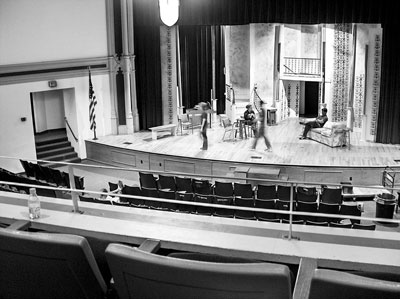All Nonfiction
- Bullying
- Books
- Academic
- Author Interviews
- Celebrity interviews
- College Articles
- College Essays
- Educator of the Year
- Heroes
- Interviews
- Memoir
- Personal Experience
- Sports
- Travel & Culture
All Opinions
- Bullying
- Current Events / Politics
- Discrimination
- Drugs / Alcohol / Smoking
- Entertainment / Celebrities
- Environment
- Love / Relationships
- Movies / Music / TV
- Pop Culture / Trends
- School / College
- Social Issues / Civics
- Spirituality / Religion
- Sports / Hobbies
All Hot Topics
- Bullying
- Community Service
- Environment
- Health
- Letters to the Editor
- Pride & Prejudice
- What Matters
- Back
Summer Guide
- Program Links
- Program Reviews
- Back
College Guide
- College Links
- College Reviews
- College Essays
- College Articles
- Back
A Blend of Art and Science
We live through life every day, carrying out our regular daily routines, from driving to work or the groceries, to biking with your friends on a sunny day, to playing an exciting baseball game in the park. It’s all very normal. However, many people have no idea how these daily activities may cause injuries that can impact a person’s life to a great extent, instantaneously. Minor injuries such as cuts and bruises won’t come as a surprise, but what about a brain injury?
All it takes for a brain injury to happen is a hit to the head, and it may just be a fall from your bike. The effects of brain injuries are dreadful for the individual, family and friends on both the financial and emotional level. Imagine how life would be to not remember who your family or friends are, how life would be to not be able to walk, and how life would be when you can’t form a logical sentence with more than five words.
The play “After the Crash”, written and directed by Julia Gray, will give you an insight to the life of a person after a brain injury. This play revolves around a man named Elliot, a young lawyer, who suffered traumatic brain injury in a car crash. The brain injury resulted in Elliot’s poor decision-making abilities, lack of emotional control, and Broca’s aphasia (trouble with language). Following the incident, audiences can see the struggles and difficulties Elliot faces as he attempts to recover from this devastating event. Through an hour of emotional and informative entertainment, you are given the chance to explore various focus areas pertaining to the needs of a patient, the tips on handling a patient when they are throwing a fit, and the roles that family and friends play in helping a patient towards recovery.
“After the Crash” is not a real life story, but it is put together with pieces of real events from the lives of brain injury survivors, their family, and health care providers. These real life events were brought together by a research project, “Research-based theatre about traumatic injury”, conducted by the Toronto Rehab Institute in joint with the University of Toronto, and was led by Dr. Angela Colantonio and Dr. Pia Kontos. This play was a joint project between the Toronto Rehabilitation Institute, the University of Toronto, Ruckus Ensemble, and was funded by the Canadian Institute of Health Research. It was after several months of developing the story and gathering information that the script finally met the actors.
“Seriously, brilliantly portrayed”, “I was inspired”, “Hit the audiences on an emotional level”, “good acting”, and “I could use this as training for my staff”, were the impressions on the audiences. With the exceptional acting of the performers, and the accuracy of the research information, “After the Crash” came out as a powerful, emotional, and educational play. Dr. Pia Kontos, a Toronto Rehab scientist, said “To have survivors stand up and say “You’ve captured my experience, and everyone has to see this play,” is wonderful,” added Dr. Kontos, “There isn’t any better affirmation of the research than that.”
“After the Crash” first premiered at The School of Dentistry at University of Toronto. The play continued to be presented at countless health care settings and conferences, including the Toronto Rehab Institute, various hospitals, and the annual conferences of the Brain Injury Association of Canada (BIAC). Of course, those won’t be the last time “After the Crash” would be in front of an audience. The annual Brain Injury Association of Canada has requested the play to be performed at their 9th annual conference, soon taking place in Ottawa from September 26th to 28th.
Over the numerous performances of the play, all professionals involved have put in an immense amount of time and effort, in hopes that they can achieve a wide spread public awareness of traumatic brain injuries. It was the idea of helping to build a healthier life for people with traumatic brain injuries and promoting awareness of this matter that seeded “After the Crash”. Dr. Angela Colantonio, a senior research scientist at Toronto Rehab, said “Brain injury can be catastrophic and often happens suddenly, and drama communicates that very effectively. The play reinforces the need for compassion for survivors and providing them with respect, choice and control,” she added, “If After the Crash leads to more awareness and better patient care, then we’re a step closer to our goal.”

Similar Articles
JOIN THE DISCUSSION
This article has 0 comments.
